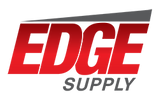4 Tips for Choosing Wet Mops
Whether used in a busy hospital cafeteria or a school hallway, mops are the simple and effective way to keep floors sparkling clean. But with the large selection, how do you know which wet mop type is best for your facilities? Here are four essential factors to consider when choosing the best wet mop for the job.
1. Type of Yarn
Most mops are constructed from yarn. The type of yarn used varies and can be a key factor when considering which mop is best for your particular needs.
Common yarns used for mops include:
- The traditional wet mop is made from cotton and is ideal for hard floors. The advantage of cotton is that it is highly absorbent. Cotton mops can quickly soak up large quantities of liquid. Cotton also costs less than mops made of synthetic yarns, initially at least. The disadvantages of cotton are that they require a "break-in period." The new mop must be immersed in hot water before it is used on floors. Cotton mops do not last as long as mops made of blends, rayon and synthetic yarns and they cannot be laundered.
- Mops made from blends are well suited for heavy jobs. Blended mops can be laundered many times before being disposed. A mop with a blended yarn head is good for general washing and scrubbing, as well as applying disinfectants and other floor finishes. The disadvantages of blended mops are that they must be pre-laundered before use.
- Rayon mops tend to dry fast which means less deterioration than their cotton counterparts. Additionally, rayon mops leave very little lint on floors and don't require a break-in period. The disadvantages of rayon are that there is little retention of liquid and they shrink when laundered.
- Synthetic mops offer superior strength. These mops leave very little lint and have no break-in period. The disadvantage of synthetic mops is the high initial cost.
2. Looped-End or Cut-End?
It's clear that the type of yarn you choose can make a huge difference in labor and material costs, not to mention results. The way in which the yarn ends are finished also matters.
- Looped-end mops have ends that are "loops". They are more expensive than mops with cut-ends but typically fare better when laundered since they don't tangle. Looped-end mops can last up to 8 times longer than mops with cut-ends and can cover twice the area in half the time which saves time and money
- Cut-end mops are less expensive initially. Laundering is not recommended since the ends tend to fray and tangle when washed. In a situation where you want something inexpensive and more disposable, a cut-end mop may be a good option. They are recommended for facilities without laundering equipment. Some cut-end mops have tailbands to extend the life of the mop.
3. Color
Did you know the color of your mop can help in maintaining the safety and cleanliness of your facilities? Color-coded mop heads, buckets, and microfiber cloths are excellent tools for preventing cross-contamination in places where bacteria and germs may spread easily.
A janitor shouldn't use the same dirty mop to clean the men's restroom as the cafeteria. Color coding can be achieved by purchasing different colored mops to identify the type work to be done.
The industry color coding standard is:
Red: High-risk areas, such as toilets and urinals.
Yellow: Low-risk, specialty areas, such as labs and gyms, and low-risk restroom areas (sinks and mirrors).
Blue: All-purpose cleaning, including dusting, window cleaning, and offices.
Green: Food service areas, such as kitchens.
Hospitals and other health care institutions require a clean and safe facility, and by using color-coded mops, workers can better prevent spreading infections and bacteria between rooms.
4. Size
Size really does matter. Since labor costs account for as much as 90% of your total facility maintenance costs, matching the correct mop size to the job is vital.
Mops come in many sizes and it can be challenging deciding which one to buy. A mop's size should be matched to the size of the floor to be cleaned. A mop's absorbency is related to the size of the mop head.
- Small mop heads typically hold 8 - 10 oz. of liquid.
- Medium mop heads typically hold 16 - 20 oz. of liquid.
- Large mop heads typically hold 24 - 32 oz. of liquid.
- Extra-Large mop heads typically hold 32 - 40 oz. of liquid.





